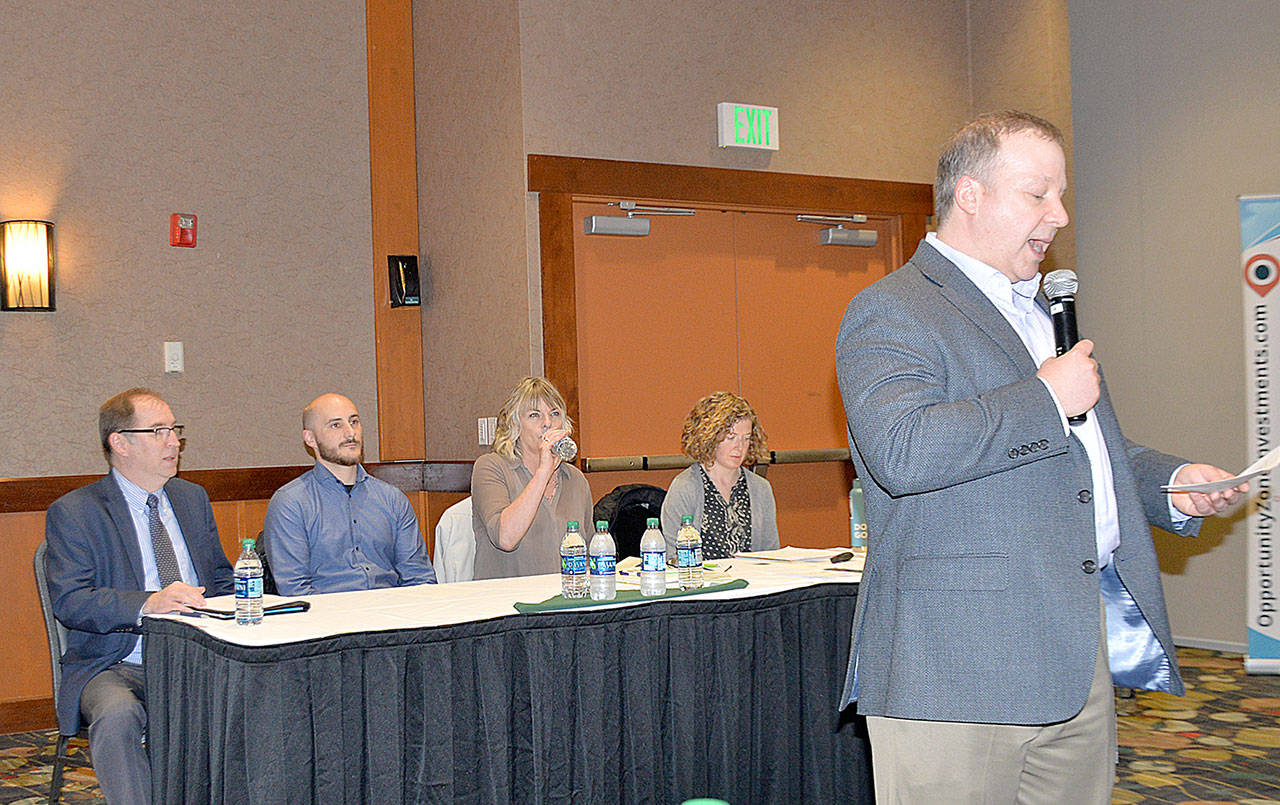More than 70 people attended Greater Grays Harbor Inc.’s opportunity zone presentation in Ocean Shores April 11 to learn about the recently-created program designed to increase investment in low-income areas through capital gains tax incentives.
Opportunity zones are census tracts selected by criteria that includes a poverty rate of at least 20 percent. There are three zones in Grays Harbor County, including Aberdeen, Hoquiam, and a stretch of the North Coast from Ocean Shores to Moclips. The zones were created as part of the Federal Tax Cuts and Jobs Act of 2017.
“The first thing we did was to find out what it means for Washington and how to make it work,” said Melissa LaFayette with the National Development Council. Since then she and others have been working on ways to promote investment in small businesses and housing developments in Grays Harbor County through opportunity zone funds.
Investments of capital gains into opportunity zone funds are subject to significant tax breaks, said LaFayette. The key is to attract investors who want to invest in projects within the Grays Harbor community, which typically will have less return on investment than investments into nationally-based community zone funds.
Kyle Wiese is a Project Manager at the Thurston Economic Development Council. He saw a chance to “create a platform to attract investment in Thurston County,” and now heads Opportunity Zone Investments, a platform for investors to seek out opportunity zone investments and helping investors who wish to create a local investment fund.
Included on the opportunityzoneinvestments.com website is a database of potential investments that can be searched by category — business, mixed use, residential, retail, etc. — location and price range. The goal is to promote the overall program while encouraging local investment.
“Traditional investors look for the best return,” said Wiese. “We thought, let’s look at getting local investors.”
Craig Nolte, Regional Manager of Community Development for the Federal Reserve Bank of San Francisco, said bringing multiple interests to the table is key to effective opportunity zone investments that benefit investors and the community. That includes property owners, tribes, local companies, foundations, banks and various state and federal agencies.
“We are looking at upstream solutions to poverty and unemployment,” said Nolte. “We want all areas to thrive.”
The IRS is still figuring out all the rules and regulations behind investments into opportunity zone funds, said Grant Jones, Director of Business Development with Greater Grays Harbor Inc.
“Almost all of the current projects are commercial real estate,” said Jones, “because of the uncertainty in the regulations.”
Julie Knott runs the Emerald Coast Opportunity Zone in Clallam County. The county was quick to see the potential in the opportunity zone program and has become a leader in promoting local investment. Their website includes descriptions of investment opportunities within the zone, including the 55-acre Bell Creek site which would be open to mixed use development, including housing, retail space and office space. Another would include a performing arts center, a tribal longhouse and a marine center.
“We’re noticing collaboration is very attractive to investors, especially when we collaborate with the tribes,” she said.
Some industrial possibilities in the Clallam County opportunity zone include a facility to make wood bricks manufactured from cedar waste for heat, and a full service fiber processing mill, both of which would take local raw materials to create their products.
More information on opportunity zones, including an interactive map to find zone maps and information on investing, visit commerce.wa.gov/growing-the-economy/opportunity-zones/. Investors can find more information on the financial aspect of opportunity zones at irs.gov/newsroom/opportunity-zones-frequently-asked-questions.


